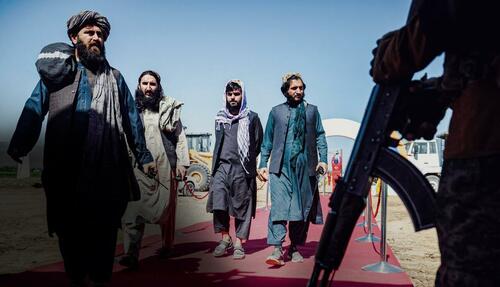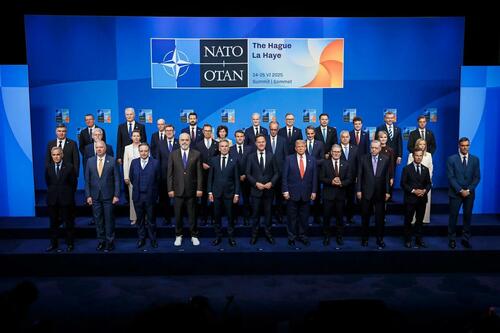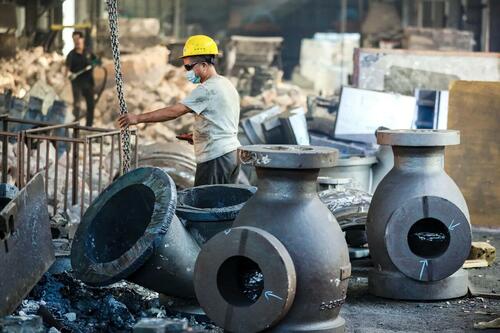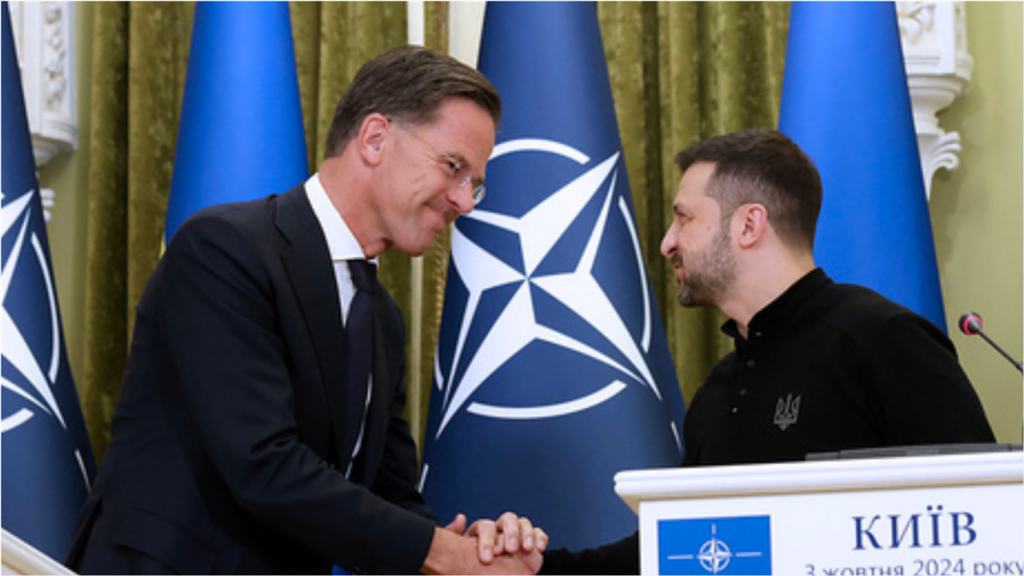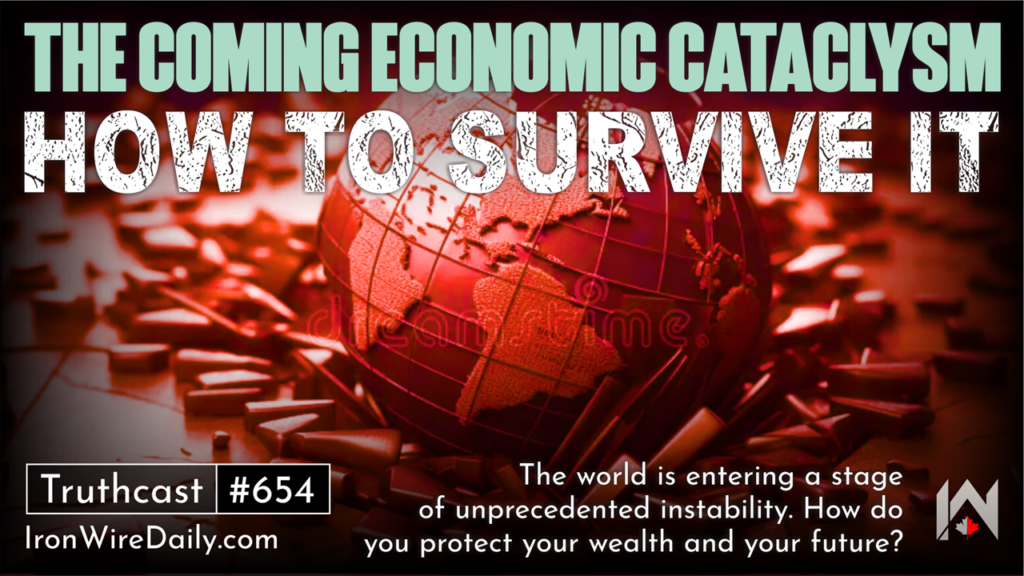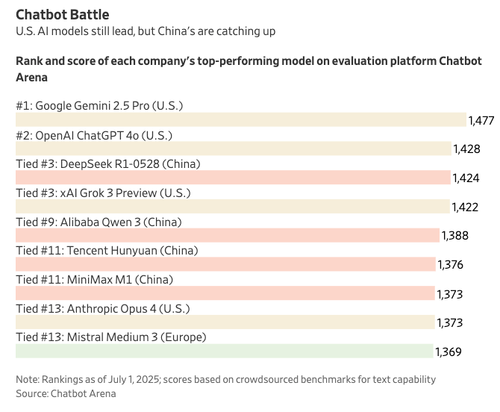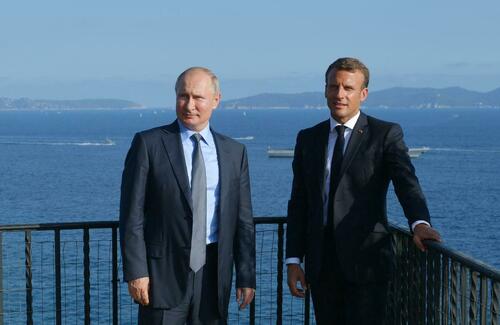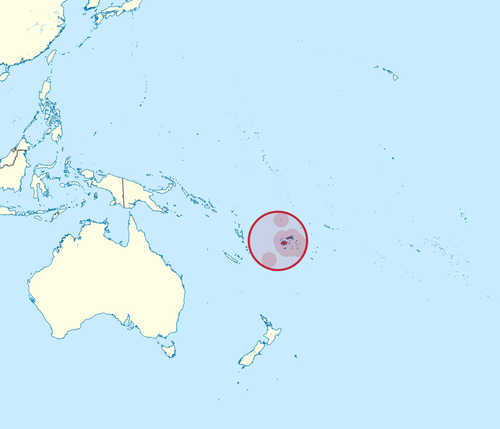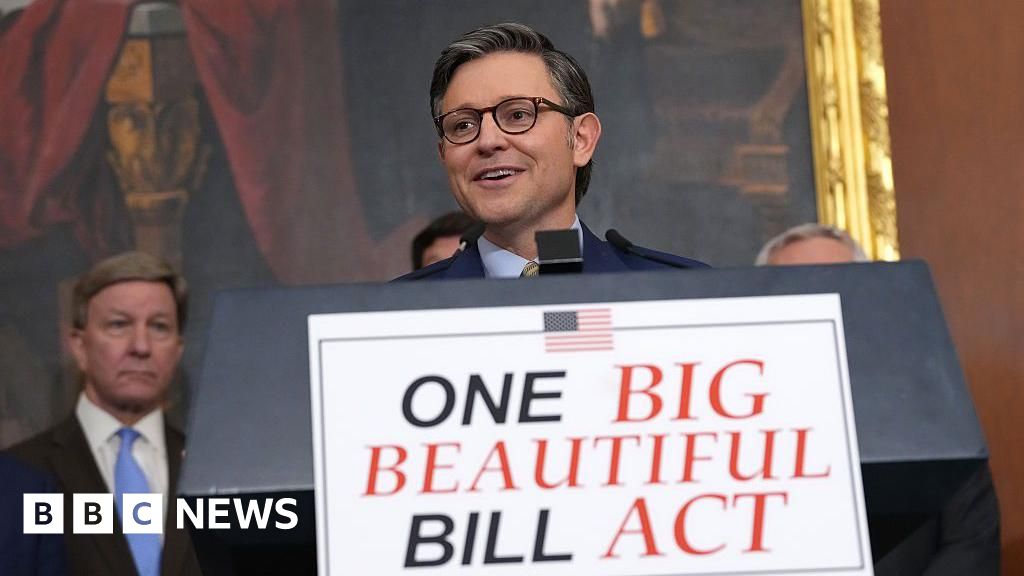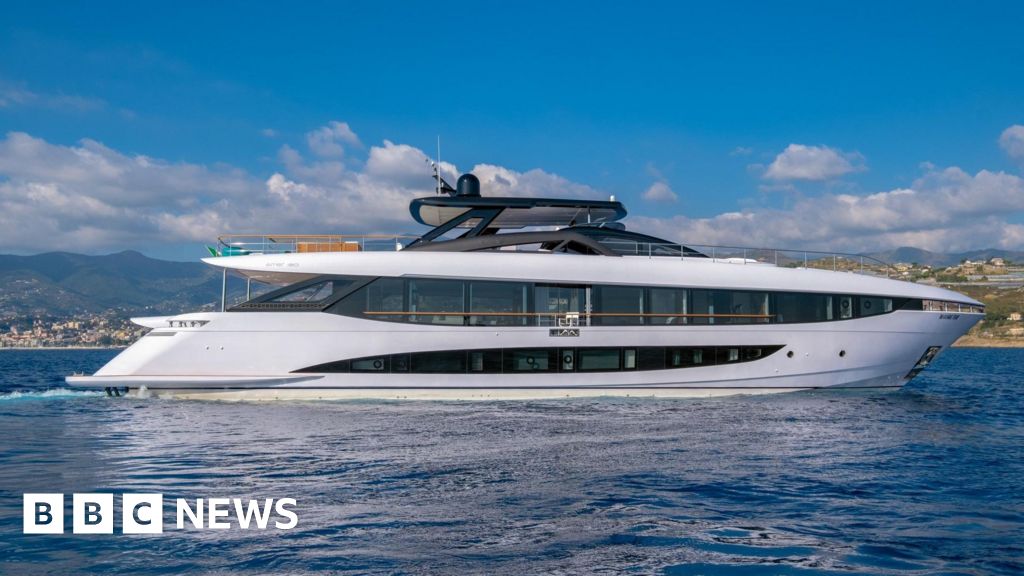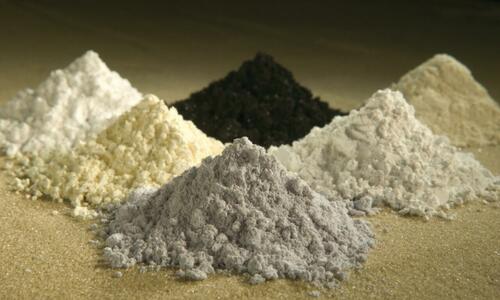How Iran War Exposed Limits Of Chinese Influence In Middle East
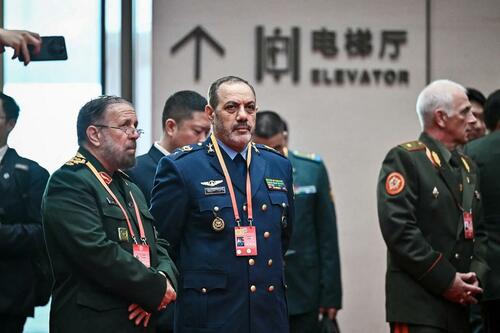
Authored by Terri Wu via The Epoch Times,
The world had a moment of clarity during the Israel–Iran conflict.
For years, analysts have noted that China is closing in on the United States as a peer competitor, whether in terms of high-tech industries, naval fleets, or the size of its diplomatic corps.
That power shift seemed to have also played out in the Middle East, a region where the United States has traditionally held significant influence.
Two years ago, Beijing brokered the normalization of diplomatic relations between Iran and Saudi Arabia. Later the same year, the China-led BRICS bloc, designed to counterbalance the U.S.-led Western democracies, admitted four new members from the region: Egypt, Iran, Saudi Arabia, and the United Arab Emirates.
The bloc was formed by Brazil, Russia, India, and China in 2009 and expanded to include South Africa in 2010.
However, the action of the United States—and the inaction of China—during the 12-day Israel–Iran conflict revealed that the power gap between Beijing and Washington remains sizable.
The United States joined its ally Israel in the conflict on June 21 by attacking key Iranian nuclear sites with 30,000-pound bunker-buster bombs.
Two days later, President Donald Trump announced a cease-fire between Israel and Iran. The truce appears to be holding so far.
By contrast, Beijing’s support for Iran remained largely rhetorical.
The Chinese regime condemned Israel and criticized the United States over the strikes on Iran. It also released joint statements with member states of BRICS and the Shanghai Cooperation Organization, a China- and Russia-led security grouping, expressing “grave concern” that the attacks on Iran violated international law.
The revelation of the power gap between the United States and China means that countries will move closer into Washington’s orbit, according to Yeh Yao-yuan, a professor of international studies at the University of St. Thomas in Houston.
That means Middle Eastern countries will shift from a pro-Beijing position to a neutral stance in the contest between China and the United States as the world moves into two camps led by the two powers, he told The Epoch Times.
Beijing is keenly aware that the U.S. focus is on Asia, particularly China, according to Christopher Balding, a senior fellow at the UK-based Henry Jackson Society. The Chinese regime deliberately kept a low profile during the Israel–Iran military conflict, he said.
“The more that they can keep the U.S. working on other non-China issues, I think that they see it as better for them,” Balding, also a contributor to The Epoch Times, told the publication.
According to China expert Alexander Liao, the Chinese Communist Party (CCP) is uncertain about its next steps.
“Beijing has realized that its existing assessment of the world—that the East is rising and the West is declining—doesn’t hold anymore,” Liao told The Epoch Times.
“Should they change the course of their strategic directions? If so, how? They haven’t made up their mind yet.”
Iran’s Defense Minister Aziz Nasirzadeh (C) attends the Shanghai Cooperation Organization defense ministers’ meeting in Qingdao, China, on June 26, 2025. The SCO’s nine official members include China, India, and Russia. China’s support has helped Iran sustain its economy and nuclear program despite decades of U.S. and UN sanctions. Pedro Pardo/AFP via Getty Images
Iran’s Role in China’s Plan
China’s support is the main reason Iran could sustain its economy and nuclear enrichment program despite decades of sanctions by the United States and the United Nations. The International Atomic Energy Agency verified a few days before the Israel–Iran conflict that Iran had 400 kilograms of enriched uranium.
Iran holds high geopolitical value to China. Its location, linking East and West, has made it an important node for the CCP’s Belt and Road Initiative. This foreign policy platform presents itself as a global infrastructure development program.
Chinese communist leader Xi Jinping visited Iran in 2016, during which the two countries formed a so-called comprehensive strategic partnership.
In 2021, Beijing and Tehran signed a 25-year agreement. China committed $400 billion in investments in telecom, banking, ports, and other infrastructure in Iran. In return, Iran agreed to supply China with oil.
Today, China purchases approximately 90 percent of Iran’s crude oil. Last year, the daily volume was about 1.5 million barrels, according to market intelligence company Kpler.
To circumvent sanctions, the oil trade between China and Iran is typically conducted in Chinese yuan or as a barter. This reduces trade volumes transacted in U.S. dollars and aligns with Beijing’s ambition to de-dollarize and increase the importance of the yuan in global trade.
The Rise of NATO
During this year’s NATO summit in The Hague, 32 member states agreed to increase defense spending to 5 percent of their gross domestic products (GDPs) by 2035.
That means the NATO military spending will more than double, given that members on average spent 2 percent of their GDPs in 2024.
According to the Stockholm International Peace Research Institute, NATO members accounted for about 55 percent of the total $2.7 trillion in global military expenditure. With NATO’s double spending, the ratio is expected to increase to roughly 70 percent.
NATO also reaffirmed its “ironclad” commitment to Article 5, which states that any attack on a member country is an attack on all.
On June 25, the military alliance also released a statement, along with its Indo-Pacific partners, stating that “the security of the Euro-Atlantic and Indo-Pacific is interconnected.” The four partners are Japan, South Korea, Australia, and New Zealand.
The Chinese regime is monitoring NATO developments closely.
NATO heads of state and government pose for an official photo at the 2025 NATO Summit in The Hague, Netherlands, on June 25, 2025. Among other matters, 32 member states agreed to increase defense spending to 5 percent of their GDPs by 2035. A day later, China’s foreign ministry criticized the move as well as NATO’s increasing focus on the Asia-Pacific region. Omar Havana/Getty Images
A Chinese Foreign Ministry spokesperson, in a post on social media platform X on June 26, criticized the spending boost and the alliance’s growing interest in the Asia-Pacific region.
Liao considers it “very likely” that democracies will expand their regional security alliances to one that’s global in scope.
“If such a significant expansion happens, it will be lethal to the Chinese Communist Party,” he said.
The expansion would mean that the Article 5-style commitment would cover Indo-Pacific nations, Liao said. He said he believes that the United States is poised to expand the current security alliance; it’s just waiting for the right time and opportunity.
“Any conflict with South Korea or Japan will evolve to a conflict with a group that accounts for 70 percent of global military spending,” he said. “This will make China’s goal of taking over Taiwan very challenging.”
Amy K. Mitchell, a founding partner at geopolitical consultancy Kilo Alpha Strategies, said that there’s a “very strong potential” that Trump will try to establish a NATO-like security alliance in the Indo-Pacific.
That would be a “very big legacy project for President Trump,” she told The Epoch Times.
For now, she sees the president himself and his unpredictability as the main deterrent to China.
“The Chinese Communist Party is probably rethinking how it’s going to handle the administration,” Mitchell said.
China still faces uncertainty in the ongoing trade war with the United States.
Beijing announced new controls on two fentanyl precursors on June 20, a day after a rare meeting between Chinese Minister of Public Security Wang Xiaohong and U.S. Ambassador to China David Perdue. Wang told Perdue that the regime was open to collaboration on curbing narcotics and illegal immigration, according to Chinese state media reports.
The move was aimed at lifting the 20 percent fentanyl-related U.S. tariffs on Chinese goods. The current tariff level on China is about 50 percent, which is the cumulative rate composed of fentanyl tariffs, 10 percent reciprocal tariffs, and existing levies from the Biden administration.
A worker moves pieces of steel machinery at a manufacturing company in Hangzhou, Zhejiang Province, China, on June 16, 2025. China’s factory output rose less than expected in May amid continued uncertainty from its trade war with the United States. STR/AFP via Getty Images
China signed an additional trade agreement with the United States last week, detailing the terms negotiated in Geneva in May. For now, the 20 percent U.S. tariff tied to China’s role in fentanyl trafficking will remain.
Beijing’s slow walk on exporting rare earth elements has been a focal point in rounds of negotiations between the two countries.
The Chinese Commerce Ministry on June 27 stated that it would “review and approve eligible export applications for controlled items in accordance with the law” as a part of the framework agreement. While it did not explicitly mention rare earths, the statement was made in response to an unnamed reporter’s question on rare earths exports.
Rare earths are essential for producing permanent magnets, a must-have component of modern manufacturing. They are also critical to military and defense hardware. China’s export licenses only cover civilian purposes and need to be renewed every six months.
Balding said China is likely to hold more tightly onto its near-monopoly control over rare earth supply.
“In addition to demonstrating its power over the global economy, China does not want to be helping the U.S. military prepare when each side is focusing more and more on how to fight each other,” he said.
Loading…
